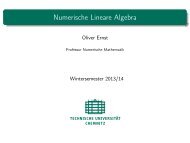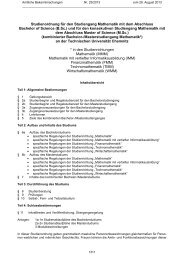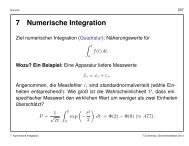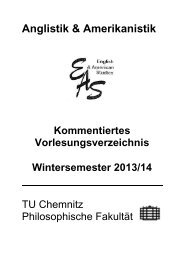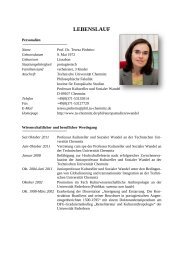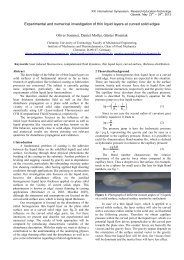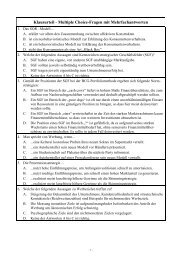2.3 David Ricardo: Profitrate und Kapitalakkumulation Die Klassik ...
2.3 David Ricardo: Profitrate und Kapitalakkumulation Die Klassik ...
2.3 David Ricardo: Profitrate und Kapitalakkumulation Die Klassik ...
Sie wollen auch ein ePaper? Erhöhen Sie die Reichweite Ihrer Titel.
YUMPU macht aus Druck-PDFs automatisch weboptimierte ePaper, die Google liebt.
32 Fritz Helmedag<br />
der Gesamtprofit von 100 Weizeneinheiten in der ersten Periode bis zum<br />
Maximum von 275 in der fünften, um auf 205,5 in Periode 8 zu sinken.<br />
<strong>Die</strong> <strong>Profitrate</strong> fällt kontinuierlich von 50 % in der ersten Periode auf<br />
11 % in der achten 92 .<br />
„It will be seen that during the progress of a country”, kündigt er dieses<br />
Phänomen an, “the whole produce raised on its land will increase,<br />
and for a certain time that part of the produce which belongs to the<br />
profits of stock, as well as that part which belongs to rent will increase;<br />
but that at a later period, every accumulation of capital will be attended<br />
with an absolute, as well as a proportionate diminution of profits, –<br />
though rents will uniformly increase.” 93<br />
<strong>Die</strong>se (zutreffende) Beschreibung der Profitentwicklung steht in schlagendem<br />
Gegensatz zu der von ihm selbst zwei Seiten vorher <strong>und</strong> gleich<br />
anschließend wieder behaupteten ständigen Schmälerung der Profite bei<br />
expandierender Bodenkultivierung. <strong>Die</strong> Irritation wird noch größer, sofern<br />
man berücksichtigt, dass <strong>Ricardo</strong> dem Profitverlauf eine herausragende<br />
Bedeutung beigemessen hat: „This is a view of the effects of accumulation<br />
which is exceedingly curious, and has, I believe, never before<br />
been noticed.“ 94 Auch in den “Principles” hat <strong>Ricardo</strong> ein Zahlenbeispiel<br />
präsentiert, in dem sich der Profit zu Beginn der <strong>Kapitalakkumulation</strong> erhöht,<br />
obwohl sich die <strong>Profitrate</strong> verringert. Erst nach Erreichen eines<br />
Maximums verkleinert sich der Profit 95 .<br />
So gesehen ist der Wissensdurst immens, warum die Tatsache der anfangs<br />
gegenläufigen Beziehung zwischen Profit <strong>und</strong> <strong>Profitrate</strong> zur Seite<br />
geschoben worden ist. Eine Antwort erscheint für <strong>Ricardo</strong> eher möglich<br />
als für seine Epigonen. Fürs erste muss man sich in Erinnerung rufen,<br />
dass der „Essay“ mit einem praktischen Anliegen verfasst worden war:<br />
keine Getreidezölle! Und unabhängig davon, in welcher konkreten Posi-<br />
92 Vgl. <strong>Ricardo</strong>, D., An Essay …, a.a.O., S. 15 f., insbesondere die Tabelle auf S.<br />
17.<br />
93 Ebenda, S. 15 f.<br />
94 Ebenda, S. 16.<br />
95 „We should also expect that, however the rate of profits of stock might diminish<br />
in consequence of the accumulation of capital on the land, and the rise of wages, yet<br />
that the aggregate amount of profits would increase … This progression however is<br />
only true for a certain time …” <strong>Ricardo</strong>, D., On the Principles …, a.a.O., S. 123.





